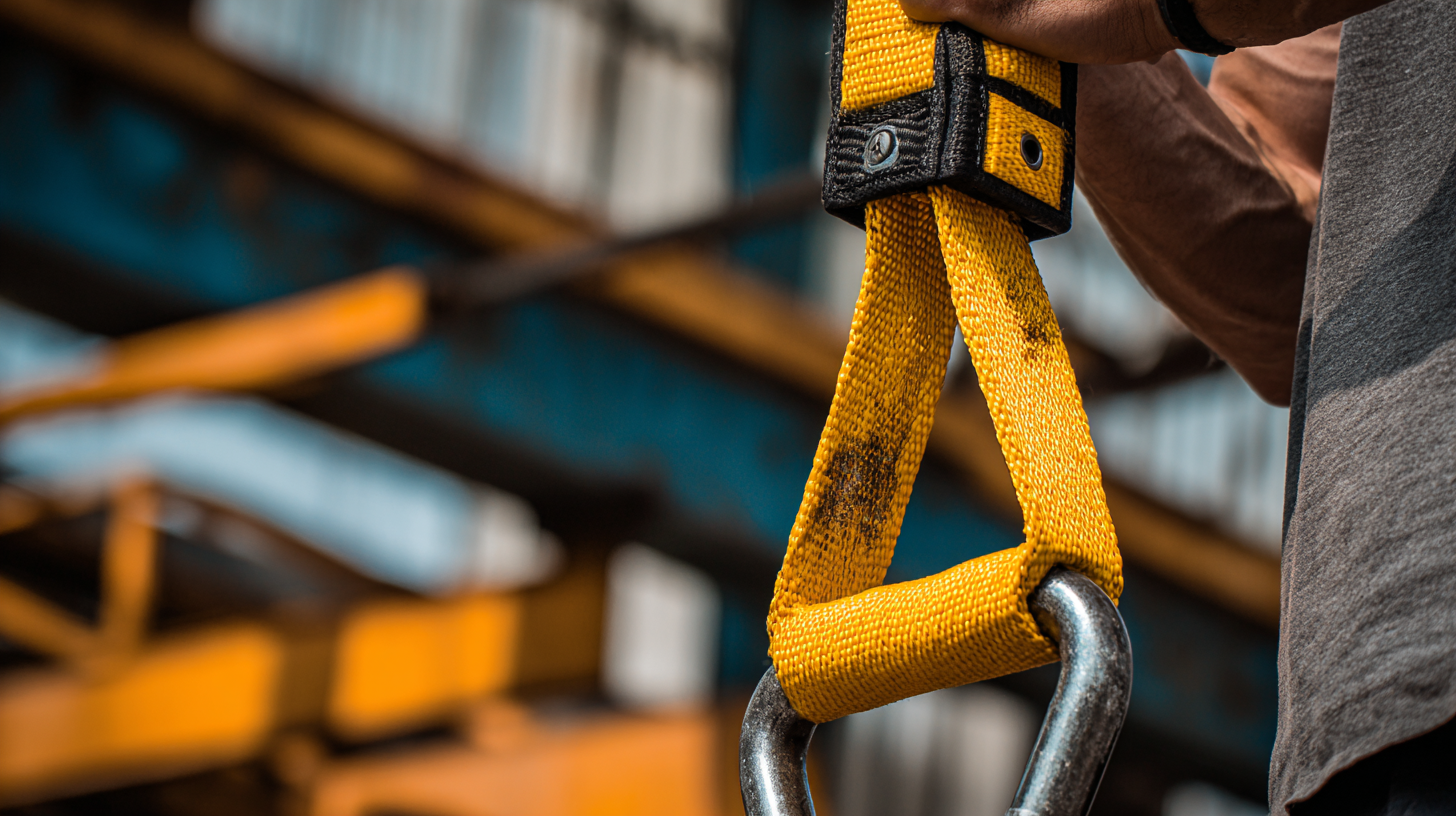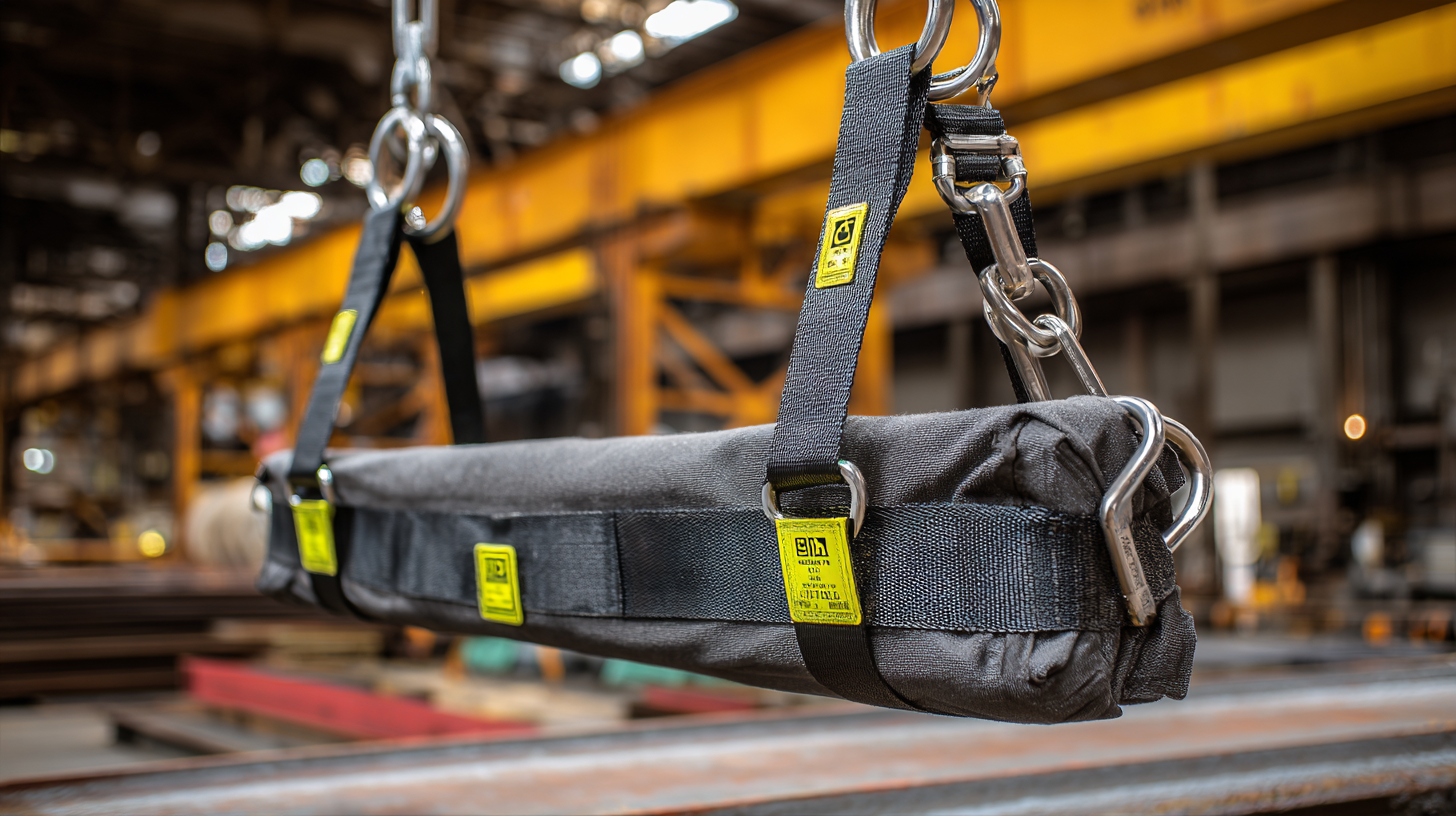The increasing demand for safe and effective lifting solutions in various industries has made the use of Nylon Sling a pivotal focus for professionals involved in material handling and logistics. According to a report from the Occupational Safety and Health Administration (OSHA), improper lifting techniques account for approximately 35% of injuries in the workplace, emphasizing the need for reliable lifting equipment. Nylon Slings, known for their lightweight yet strong nature, exhibit remarkable load capacities, with certain models rated to lift loads exceeding 30 tons, as highlighted by the Industrial Rope and Sling Trade Association (IRS). Moreover, their resistance to abrasion and UV degradation contributes to longer service life and safety on job sites, supporting a significant reduction in workplace incidents. This guide will explore the multifaceted benefits of employing Nylon Slings, positioning them as an indispensable tool for ensuring safety and efficiency in lifting operations across various sectors.

Nylon slings are increasingly being recognized as a superior choice for lifting heavy loads due to their numerous advantages. One of the primary benefits is their exceptional strength-to-weight ratio. Nylon slings can easily support significant weights while remaining lightweight and pliable, making them easier to handle and maneuver in tight spaces. This flexibility allows for efficient use in various lifting operations, reducing the risk of damage to the load and surroundings.
Another key advantage of nylon slings is their resistance to abrasion and UV rays, enhancing their longevity and reliability in diverse environments. Unlike some other materials, nylon doesn't easily fray or degrade when exposed to sunlight or rough surfaces. Additionally, they exhibit excellent resistance to chemical exposure, which is crucial in industrial settings where slings may come into contact with oils, acids, or other harmful substances. This durability ensures that operators can rely on nylon slings for safe lifting, minimizing downtime and maintenance costs associated with more fragile lifting equipment.
| Feature | Description | Benefits |
|---|---|---|
| Strength | Nylon slings have high tensile strength, allowing them to lift heavy loads safely. | Reduced risk of failure during lifting operations, ensuring safety. |
| Flexibility | They can easily conform to the shape of the load. | Improved stability and weight distribution during lifting. |
| Lightweight | Nylon slings are lighter compared to their metal counterparts. | Easier handling and reduced fatigue for operators. |
| Chemical Resistance | Resistant to many chemicals and environmental factors. | Increased durability and lifespan in harsh conditions. |
| Cost-Effective | Relatively lower in cost compared to chains or wire ropes. | Lower overall lifting costs, particularly for large operations. |
 Nylon slings are widely recognized for their robust safety features that enhance lifting operations. One of the primary advantages of using nylon slings is their inherent strength-to-weight ratio, which allows for effective lifting of heavy loads while maintaining flexibility. The material is resistant to UV rays and chemical damage, making it suitable for various environments, including construction sites and industrial applications. This resilience ensures that the slings remain functional longer, reducing the need for frequent replacements and enhancing overall safety.
Nylon slings are widely recognized for their robust safety features that enhance lifting operations. One of the primary advantages of using nylon slings is their inherent strength-to-weight ratio, which allows for effective lifting of heavy loads while maintaining flexibility. The material is resistant to UV rays and chemical damage, making it suitable for various environments, including construction sites and industrial applications. This resilience ensures that the slings remain functional longer, reducing the need for frequent replacements and enhancing overall safety.
Another key safety feature of nylon slings is their ability to stretch under load, which helps to absorb shock and minimizes the risk of sudden jerks during lifting. This controlled stretch can prevent accidents by allowing for a gradual transfer of weight, reducing the impact on both the sling and the load being lifted. Additionally, nylon slings typically come with color-coded tags that provide crucial information regarding the load capacity and maintenance guidelines, ensuring that users are aware of the appropriate usage and safety measures. By incorporating these features, nylon slings significantly contribute to safer lifting practices in various applications.
When it comes to using nylon lifting slings, proper maintenance is crucial to ensure safety and effectiveness during operations. Nylon slings are known for their versatility and strength, but neglecting their care can lead to wear and tear that compromises their integrity.
Regularly inspect the slings for signs of fraying, cuts, or other damage, as these can significantly reduce their load capacity and increase the risk of failure during lifting tasks.

Additionally, storing nylon slings in a cool, dry place away from direct sunlight can help preserve their quality and extend their lifespan. It’s important to avoid exposure to chemicals that could degrade the material. For optimal performance, clean the slings with mild soap and water after each use to remove dirt and debris, ensuring that they remain functional for future operations. By following these maintenance tips, users can maximize the effectiveness of nylon lifting slings while ensuring safe handling during any lifting operation.
When selecting a nylon sling for lifting, it’s essential to consider several key factors to ensure safety and effectiveness. Firstly, assess the weight capacity of the sling; it must be appropriate for the load you will be lifting. Additionally, consider the length and width of the sling, as these dimensions can affect how the load is balanced and distributed during the lift.
Tips: Always check the manufacturer's specifications, which detail the safe working load limit and recommend applications for the sling. Ensure the sling is made of high-quality nylon material, which provides durability and resistance to abrasion.
Another important aspect to consider is the type of lift you will be performing. Different slings are designed for various lifting techniques such as basket hitches, choke hitches, or vertical lifts, and choosing the right type will enhance the security and efficiency of your lifting operations.
Tips: When in doubt, consult with a lifting and rigging professional to select the most suitable nylon sling for your specific lifting needs, ensuring that you adhere to safety protocols and guidelines throughout the process.
When using nylon slings for lifting, safety and efficiency can be significantly improved, but common mistakes can lead to serious hazards. One frequent error is exceeding the sling's rated capacity. According to the American National Standards Institute (ANSI), using slings beyond their capacity can result in failure, which can pose risks to both personnel and equipment. It is crucial to thoroughly understand the load limits marked on the slings and to always calculate the total load weight, including the equipment and any additional attachments.
Another common mistake is improper sling configuration, such as using incorrect hitch types or failing to maintain appropriate angles. The Occupational Safety and Health Administration (OSHA) emphasizes the importance of maintaining a correct lifting angle to minimize stress on the sling. A sling angle of less than 30 degrees can dramatically increase the force that the sling experiences, raising the potential for failure. Additionally, neglecting thorough inspections prior to each lift can lead to using damaged or worn-out slings, further increasing the risks involved. Adhering to best practices not only ensures safe lifting operations but also maximizes the lifespan of the nylon slings.






